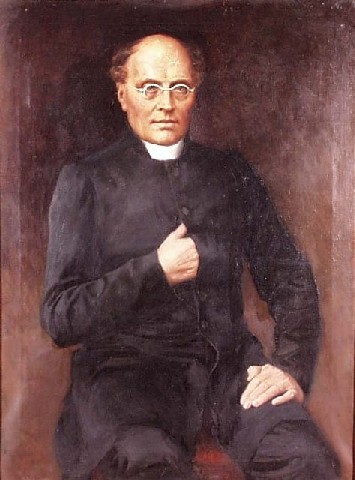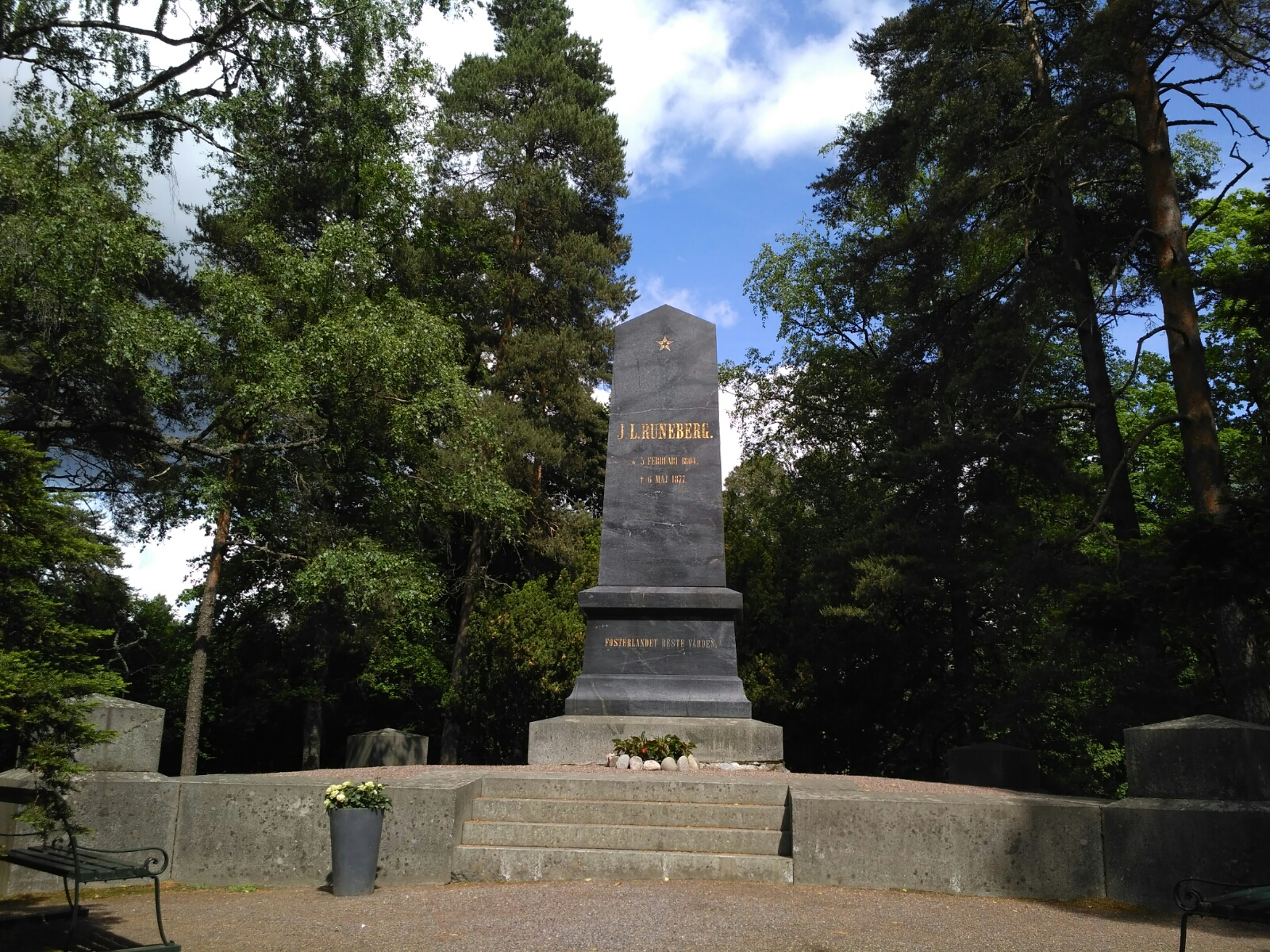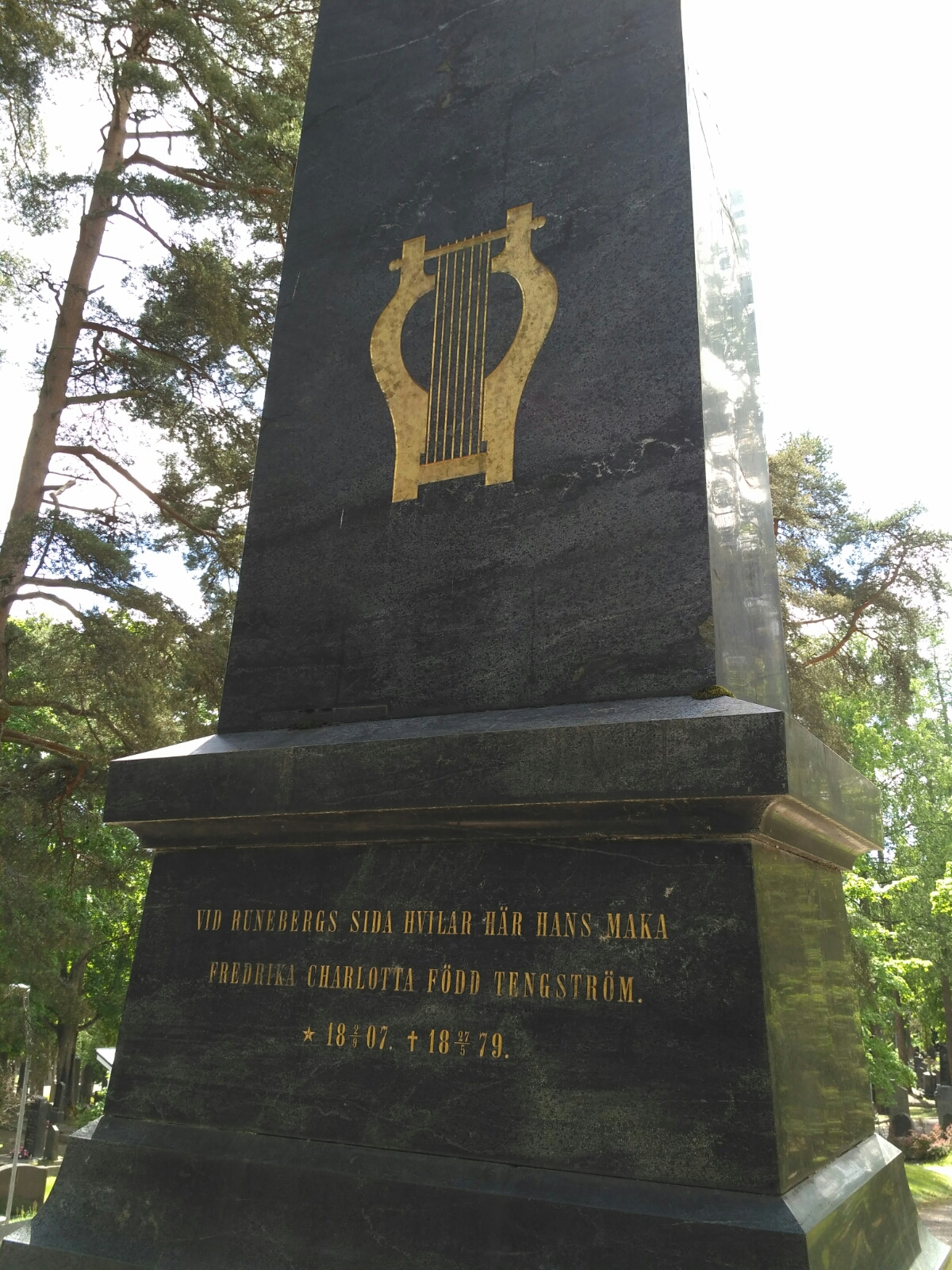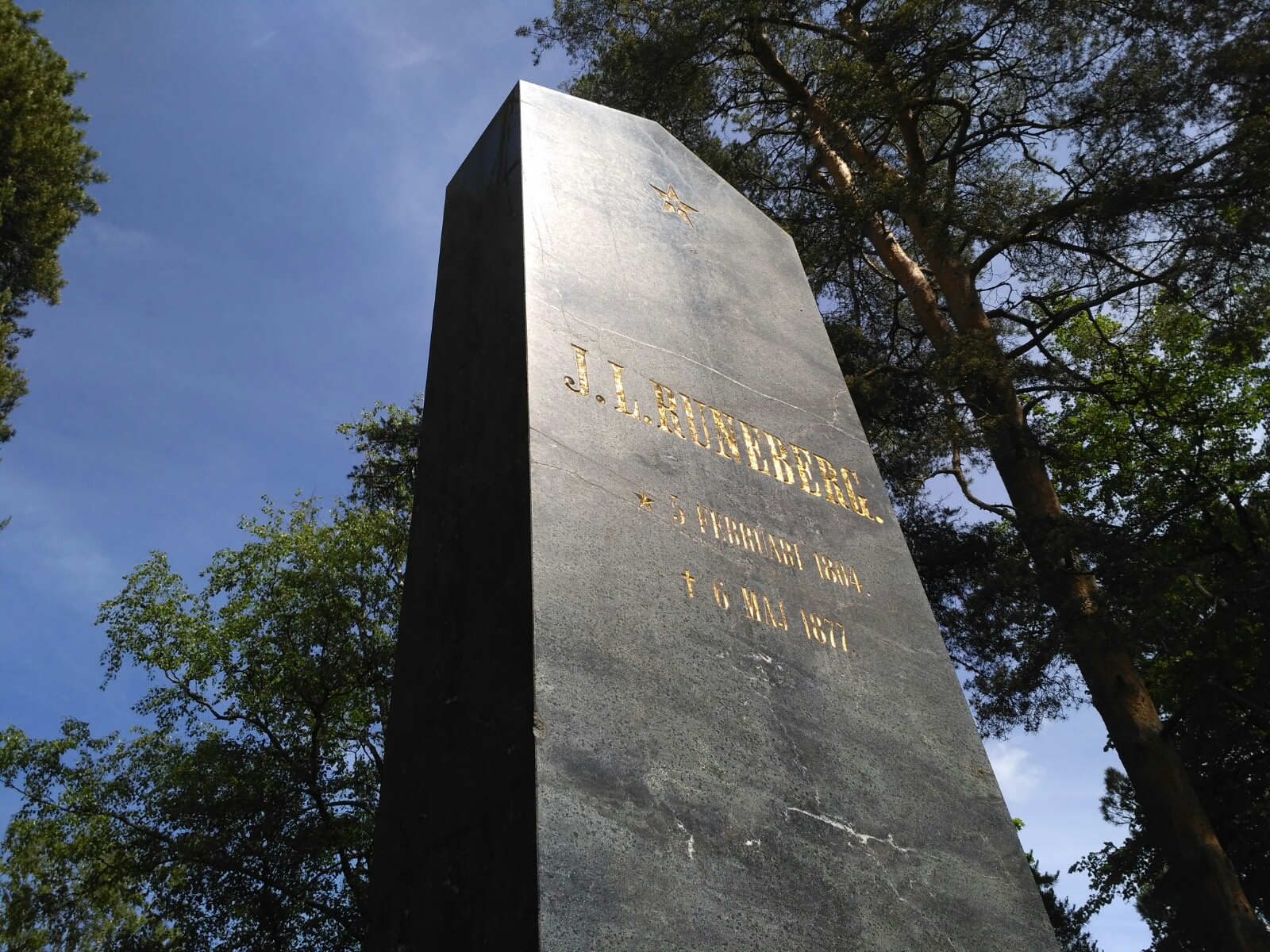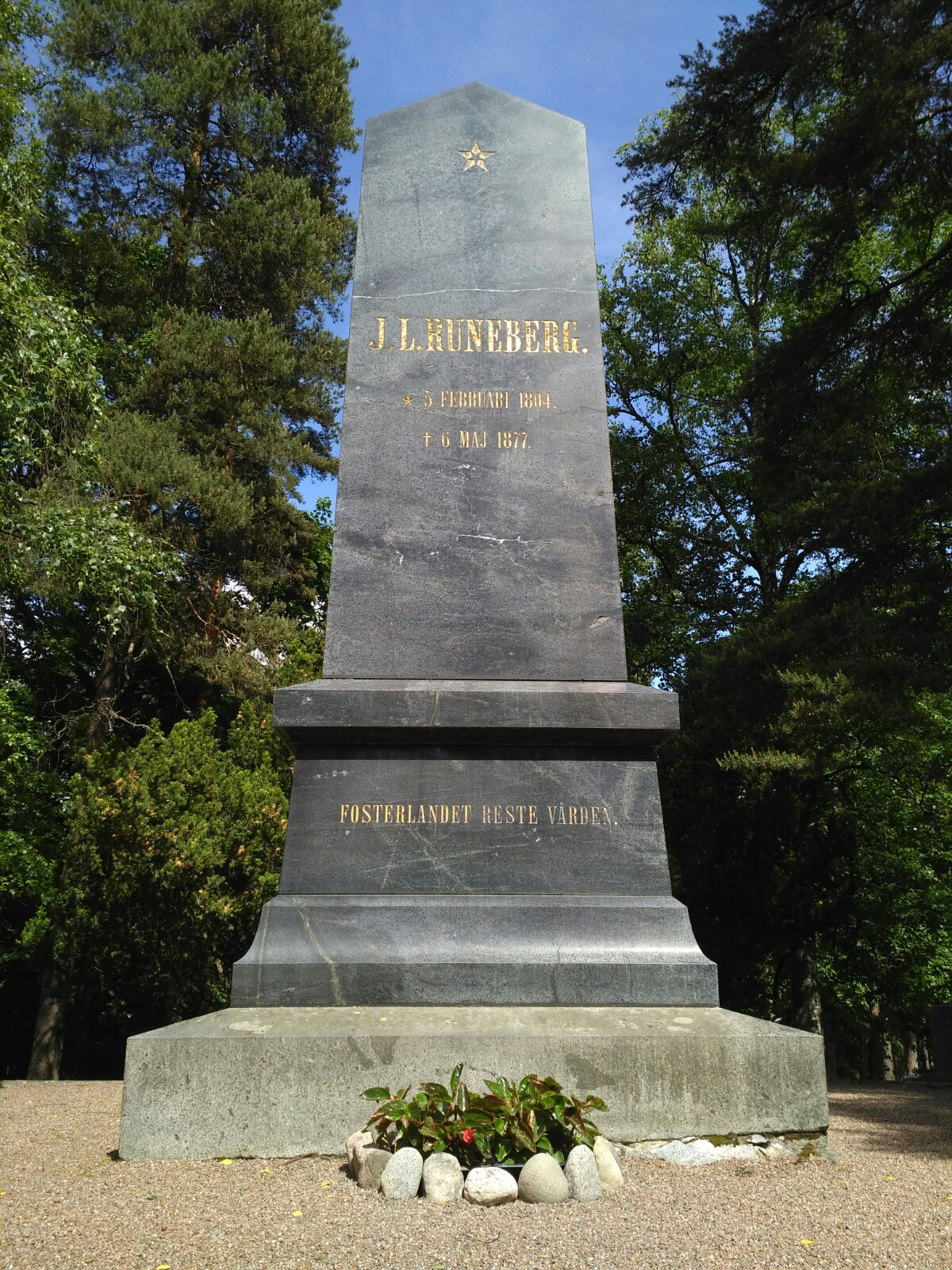The eldest of six children, Runeberg was born on February 5, 1804, to Lorenz Ulrik Runeberg and Anna Maria (Malm) Runeberg, a relatively poor Swedish-speaking family in Jakobstad (Pietaraari), Finland. His grandparents had emigrated from Sweden to Finland, and his father was a ship captain who had once studied theology. At the age of eight, Runeberg was sent to Oleåborg (Oulu), to live with an uncle. He entered the school there, and after his uncle died, he studied at the Vaasa Grammar School, and at the University of Åbo (Turku). In the 1820s he became friends with J.L. Snellman and Zachris Topelius, who gained later fame with historical novels.
Runeberg took a job as a personal tutor to a family, who lived in Saarijärvi in central Finland. Making acquaintance with the ordinary Finnish-speaking people affected him deeply. During this period he heard tales of the Russo-Swedish war of 1808-09. This war had led to the cession of Finland from Sweden to Russia, and Finland became a true autonomous grand duchy.
In 1827 Runeberg received his Master of Arts degree. He continued his studies in Helsinki and in 1830 he became a lecturer in Rhetoric. Runeberg's first collection of poems, “Dikter”, appeared in 1830 and reflected his love of Finland's landscape and the heroic inhabitants of the backwoods.
He married in 1831 Fredrika Charlotta Tengström and they had eight children. Their son Walter Runeberg (1838-1920) became a sculptor and his statue of his father was unveiled in Helsinki in 1885. To support his growing family, Runeberg moved to Helsinki 1831 and took a job teaching at a secondary school, and the newlyweds also began to take in lodgers, including Topelius, to make ends meet. In 1832, he published the very well received “Elgskyttarne” (The Elk Hunters) and founded a literary newspaper, the Helsingfors Morgonblad. The paper went on to become quite influential in Finland and Sweden, and counted among its prolific contributors none other than Runeberg's old classmate, Elias Lönnrot.
In 1837 Runeberg was appointed lecturer in classics at Porvoo Gymnasium (the college of Borgå). The following year he founded the Borgå Tidning and worked as its editor. His liberal views and attacks on pietistic narrow-mindedness provoked one of the most important debates about religion of the period. In 1847 Runeberg became rector of the college. The following year, he published what was to become his best known work, “Fänrik Stål Sägner” (Tales of Ensign Stål). The classical epic poem was composed of 35 heroic ballads, and set during the 1808-1809 war with Russia, an era that had first captured Runeberg's imagination during his tutoring days. The poem's themes of humanity and patriotism even passed muster with the Russian censor before its release, and its mission to stir feelings of Finnish pride and nationalism was overwhelmingly successful. The book was hugely popular, and Runeberg was promptly dubbed the national poet of Finland. On May 13, 1848, a musical version of the first ballad by composer Fredrik Pacius (1809-1891) of the University of Helsinki, titled "Our Land" (Vårt Land/Maamme), was debuted by a university choir in Helsinki. Pacius himself conducted, and the crowd was moved to tears as Finland's national anthem was born.
In 1865 the 61-year-old Runeberg suffered a debilitating stroke that left him severely incapacitated for the remainder of his life. His devastated wife tended to him 12 hours a day, reading aloud and easing his suffering in any way she could. He died on May 6, 1877, 40 years to the day after his taking the position at Borgå College. Runeberg was buried on May 17, and the day was declared a national day of mourning. Runeberg Day (Runebergin päivä) is celebrated annually on February 5th, the day of Runeberg's birth.
Sources: Wikipedia, www.encyclopedia.com (Bio by: Maira)
The eldest of six children, Runeberg was born on February 5, 1804, to Lorenz Ulrik Runeberg and Anna Maria (Malm) Runeberg, a relatively poor Swedish-speaking family in Jakobstad (Pietaraari), Finland. His grandparents had emigrated from Sweden to Finland, and his father was a ship captain who had once studied theology. At the age of eight, Runeberg was sent to Oleåborg (Oulu), to live with an uncle. He entered the school there, and after his uncle died, he studied at the Vaasa Grammar School, and at the University of Åbo (Turku). In the 1820s he became friends with J.L. Snellman and Zachris Topelius, who gained later fame with historical novels.
Runeberg took a job as a personal tutor to a family, who lived in Saarijärvi in central Finland. Making acquaintance with the ordinary Finnish-speaking people affected him deeply. During this period he heard tales of the Russo-Swedish war of 1808-09. This war had led to the cession of Finland from Sweden to Russia, and Finland became a true autonomous grand duchy.
In 1827 Runeberg received his Master of Arts degree. He continued his studies in Helsinki and in 1830 he became a lecturer in Rhetoric. Runeberg's first collection of poems, “Dikter”, appeared in 1830 and reflected his love of Finland's landscape and the heroic inhabitants of the backwoods.
He married in 1831 Fredrika Charlotta Tengström and they had eight children. Their son Walter Runeberg (1838-1920) became a sculptor and his statue of his father was unveiled in Helsinki in 1885. To support his growing family, Runeberg moved to Helsinki 1831 and took a job teaching at a secondary school, and the newlyweds also began to take in lodgers, including Topelius, to make ends meet. In 1832, he published the very well received “Elgskyttarne” (The Elk Hunters) and founded a literary newspaper, the Helsingfors Morgonblad. The paper went on to become quite influential in Finland and Sweden, and counted among its prolific contributors none other than Runeberg's old classmate, Elias Lönnrot.
In 1837 Runeberg was appointed lecturer in classics at Porvoo Gymnasium (the college of Borgå). The following year he founded the Borgå Tidning and worked as its editor. His liberal views and attacks on pietistic narrow-mindedness provoked one of the most important debates about religion of the period. In 1847 Runeberg became rector of the college. The following year, he published what was to become his best known work, “Fänrik Stål Sägner” (Tales of Ensign Stål). The classical epic poem was composed of 35 heroic ballads, and set during the 1808-1809 war with Russia, an era that had first captured Runeberg's imagination during his tutoring days. The poem's themes of humanity and patriotism even passed muster with the Russian censor before its release, and its mission to stir feelings of Finnish pride and nationalism was overwhelmingly successful. The book was hugely popular, and Runeberg was promptly dubbed the national poet of Finland. On May 13, 1848, a musical version of the first ballad by composer Fredrik Pacius (1809-1891) of the University of Helsinki, titled "Our Land" (Vårt Land/Maamme), was debuted by a university choir in Helsinki. Pacius himself conducted, and the crowd was moved to tears as Finland's national anthem was born.
In 1865 the 61-year-old Runeberg suffered a debilitating stroke that left him severely incapacitated for the remainder of his life. His devastated wife tended to him 12 hours a day, reading aloud and easing his suffering in any way she could. He died on May 6, 1877, 40 years to the day after his taking the position at Borgå College. Runeberg was buried on May 17, and the day was declared a national day of mourning. Runeberg Day (Runebergin päivä) is celebrated annually on February 5th, the day of Runeberg's birth.
Sources: Wikipedia, www.encyclopedia.com (Bio by: Maira)
Family Members
Advertisement
Explore more
Sponsored by Ancestry
Advertisement






